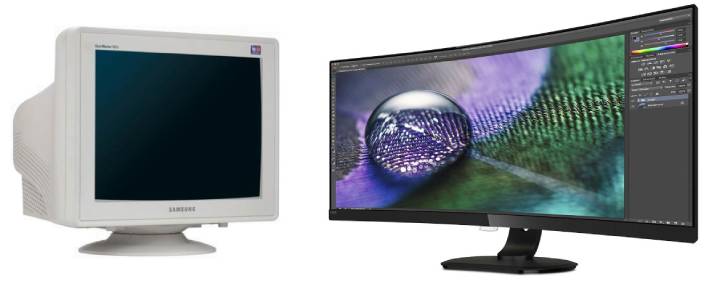Eyes and Video Games – How to Take Care of Your Eyesight as a Gamer?
We often hear that long hours spend in front of the screen may cause blindness. There is a germ of truth in such a statement, so let's check how to take care of our eyes. At the same time, it's worth to explore the incredible abilities of our sight.

- Eyes and Video Games – How to Take Care of Your Eyesight as a Gamer?
- Exercises and eye drops
- Lighting intensity, anti-reflex coating, healthy eyes diet
- Preparing a healthy workplace
Nowadays, when we sit many hours in front of computer screens or TVs (whether for entertainment or work), it is worth remembering that our eyes can also have their limits. In this article, we have prepared a few simple tips, which may have a positive impact on your eyesight.

The miracle of genetic engineering
To value our eyes, we should understand their extraordinary construction – they can be considered a miracle of biotechnology and genetic engineering. Although their major function can be compared to cameras that transmit images to the brain, they consume much of its "computing power" (and it's the brain that generates the animated image in our minds).
Light enters the interior of the eye through the pupil (that black circular spot in the middle) , where it hits the lens, and in a result the real-time image is reflected on the retina located at the rear part of the eyeball. Then, the information from the retina is transported to our cerebral ganglia, where it gets properly processed – this is how our eyesight works.
Large part of the retina is made up of millions of rods, which are responsible for detecting movement (very useful in FPS!). The middle part of the retina is responsible for identifying colors and cones are responsible for recognizing them. The largest army of these photosensitive receptors can be found in the macula. They recognize 3 basic colors – red, green, blue. The light falling on them is analyzed, so we can see other colors as well.
Monitors and screens – can they spoil your eyesight?
As the old CRT (cathode-ray tube) monitors were accused of having a negative effect on user's eyes, polarizing filters were quickly released to reduce the amount of emitted radiation and limit the negative impact of screen flickering. Were they effective? Many people thought that not necessarily, but newer models of display screens already had built-in filters and theoretically minimized the negative effects of staring at the screen.
Today we have a completely different type of display screens – whether on a PC or laptop. In LCD screens, the image is generated by controlling panel cells containing a liquid crystal substance that absorbs the radiation emitted by the light source. In newer solutions this source are LED diodes; and even OLED displays are becoming increasingly popular.

Virtually every color displayed on the monitor is the result of three color mix-up – red (R), green (G) and blue (B). The blue light is the most harmful one to human eyes and it may cause eye fatigue. That's why many screens and operating systems have a night mode feature, which reduces the presence of this color, reducing user's discomfort.
However, this does not change the fact that our eyes can get tired after several hours of constant contact with a screen. While using a PC at work, the blinking frequency significantly decreases, which makes it impossible to sufficiently lubricate eye's conjunctiva and cornea. In addition, user's eyes remain focused on one object for a long time in front of the monitor. This decreases the ability to accommodate and weakens eye’s muscles.
On the following pages of our article you will find some detailed tips that may help you in maintaining comfortable vision even during long sessions in front of your screen.
Table of contents:
- Eye exercises and their proper lubrication
- Lighting intensity, anti-reflective coating, diet for healthy eyes
- Preparing a healthy workplace
